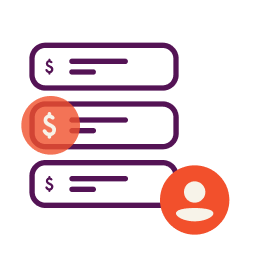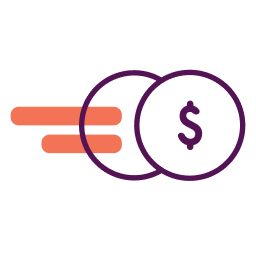


T he EIDL, or Economic Injury Disaster Loan, is not the same thing as the Paycheck Protection Program (PPP) financing previously offered to small business owners suffering from business disruptions caused by the COVID-19 virus. Because the loan amounts for a PPP loan and the requirements around using the funds to primarily support payroll, for many small business owners who don’t have employees and don’t compensate themselves within a traditional payroll model, the EIDL might be a better option—because the EIDL loan requirements are different. (Note that PPP is closed but EIDL loans are still available.) The Economic Injury Disaster loan requirements are based on similar SBA disaster loan requirements that have been used in the aftermath of a hurricane, tornado, or other physical disaster, but in this case related to the economic injury caused by the COVID-19 coronavirus. I am neither an attorney nor an accountant so if you have any specific questions regarding how this might apply directly to your business, I recommend you consult with your own trusted legal advisor.

Spend more time crushing goals than crunching numbers. Instantly, compare your best financial options based on your unique business data. Know what business financing you can qualify for before you apply, with Nav.
The eligibility requirements for the EIDL are slightly different than those for the PPP and are intended to provide economic support to small businesses to help overcome a temporary loss of revenue resulting from the pandemic; and other than the grant portion described below, does not rely on payroll numbers to calculate the loan amount. The SBA describes the program as for , “…any small business with less than 500 employees (including sole proprietorships, independent contractors and self-employed persons), private non-profit organizations or 501(c)(19) veterans organizations affected by COVID-19.” Because of the high demand for the EIDL, the SBA has capped the maximum loan amount available to $150,000—plus whatever your business qualifies for as the advance. Note the SBA later raised it to $500,000 and later raised it to $2 million for eligible businesses. Interest rates for the EIDL are 3.75% for small businesses and 2.75% for non-profits with up to a 30-year term. Eligibility also requires that your business must have been in operation before January 31, 2020. The way the SBA determines whether or not your business is a small business is based on the average of your annual receipts or the average number of employees—usually under 500. There are businesses in certain industries that may have more than 500 employees if they meet certain SBA size requirements. The SBA offers what they call a Size Standards Tool , that will help you determine if your business will meet those size requirements if you have over 500 employees.
As part of the EIDL an advance of up to $10,000 is available for those who apply for the EIDL. The advance portion of the loan originally was based on the number of employees in your business: $1,000 per employee, up to 10 employees (or $10,000). However, Congress later authorized Targeted EIDL Advances of up to $10,000, with an additional $5000 to certain hardest-hit businesses. Learn more about Targeted EIDL grants here. Funds will be made available following a successful application and the loan advance does not have to be repaid. Unlike the PPP, the EIDL advance, as well as the entire EIDL, are considered working capital loans and may be used to pay fixed debts, payroll, accounts payable, and other bills that could have been paid had the disaster not occurred. These loans are not intended to replace lost sales, profits, or to pay for expansion. Originally they could not be used to pay down long-term debt but the SBA has modified those rules. Read: 5 Ways You Can And Cannot Use Your EIDL Loan

Join 250,000+ small business owners who built business credit history with Nav Prime — without the big bank barriers.
You should expect that there are credit issues that will likely disqualify you:
General guidelines for SBA Disaster Loans further state:
“For disaster lending purposes, satisfactory credit history is defined as a history that generally shows payments to creditors as agreed unless otherwise justified…
Generally, a history that consists of minor, isolated instances of adverse credit or late payments is acceptable. Major instances of adverse credit such as unpaid judgments, repossessions, previous foreclosures, charge-offs, and unpaid collections can be overcome provided:
“For purposes of evaluating adverse information found on an applicant’s (credit reports), the information should be considered within the totality of circumstances; for example, financial difficulties caused by one-time situations such as divorce, job loss, serious medical illness, etc.
“For purposes of disaster lending, medical collections are not considered adverse information.
“Non-medical collections or charged off accounts with an aggregate of $10,000 or less and foreclosures or deed-in lieu of foreclosures which occurred more than two years from the date of the loan application are all considered an acceptable credit risk and do not require any additional justification.”
Unlike its PPP counterpart, any business applying for an EIDL will apply directly to the SBA . Because the application volume is so high, the SBA suggests that you apply online, but if you have questions about the application or problems providing the required information, you can contact the SBA’s Customer Service Center at 1-800-659-2955 or (TTY:1-800-877-8339. Their email address is DisasterCustomerService@sba.gov .
We are hearing from business owners who have shared their experiences regarding the EIDL with us that the SBA has been very helpful with questions, but that it will likely take a long time to get through and that funds distribution will likely take longer than you might otherwise expect.
Please keep in mind this information is changing rapidly and is based on our current understanding of the programs. It can and likely will change. Although we will be monitoring and updating this as new information becomes available, please do not solely rely on this for your financial decisions. We encourage you to consult with your lawyers, CPAs, and Financial Advisors. To review your real-time funding options with one of Nav’s lending experts, please contact us.
This article was originally written on April 15, 2020 and updated on February 2, 2023.
This article currently has 267 ratings with an average of 4.5 stars.